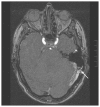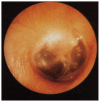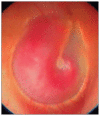Tinnitus: identifying the ominous causes
- PMID: 21609995
- PMCID: PMC3255117
- DOI: 10.1503/cmaj.091521
Tinnitus: identifying the ominous causes
Figures





References
-
- Liyanage SH, Singh A, Savundra P, et al. Pulsatile tinnitus. J Laryngol Otol 2006;120:93–7 - PubMed
-
- Crummer RW, Hassan GA. Diagnostic approach to tinnitus. Am Fam Physician 2004;69:120–6 - PubMed
-
- Sismanis A. Pulsatile tinnitus. Otolaryngol Clin North Am 2003; 36:389–402 - PubMed
-
- Biesinger E, Del Bo L, De Ridder D, et al. Algorithm for the diagnostic and therapeutic management of tinnitus. Tinnitus Clinic Network, Tinnitus Research Initiative; Available: www.tinnitusresearch.org/en/documents/downloads/TRI_Tinnitus_Flowchart.pdf (accessed 2010 Aug. 9).
-
- Lewis JE, Stephens SD, McKenna L. Tinnitus and suicide. Clin Otolaryngol Allied Sci 1994;19:50–4 - PubMed
